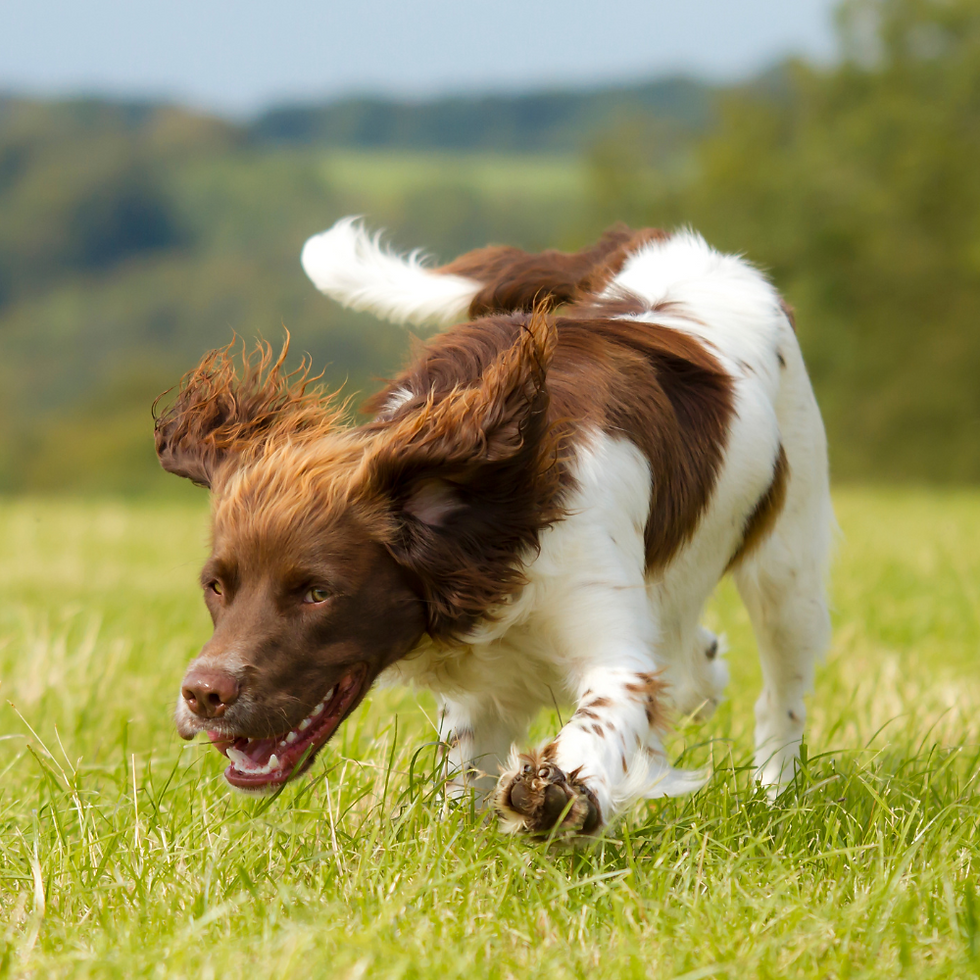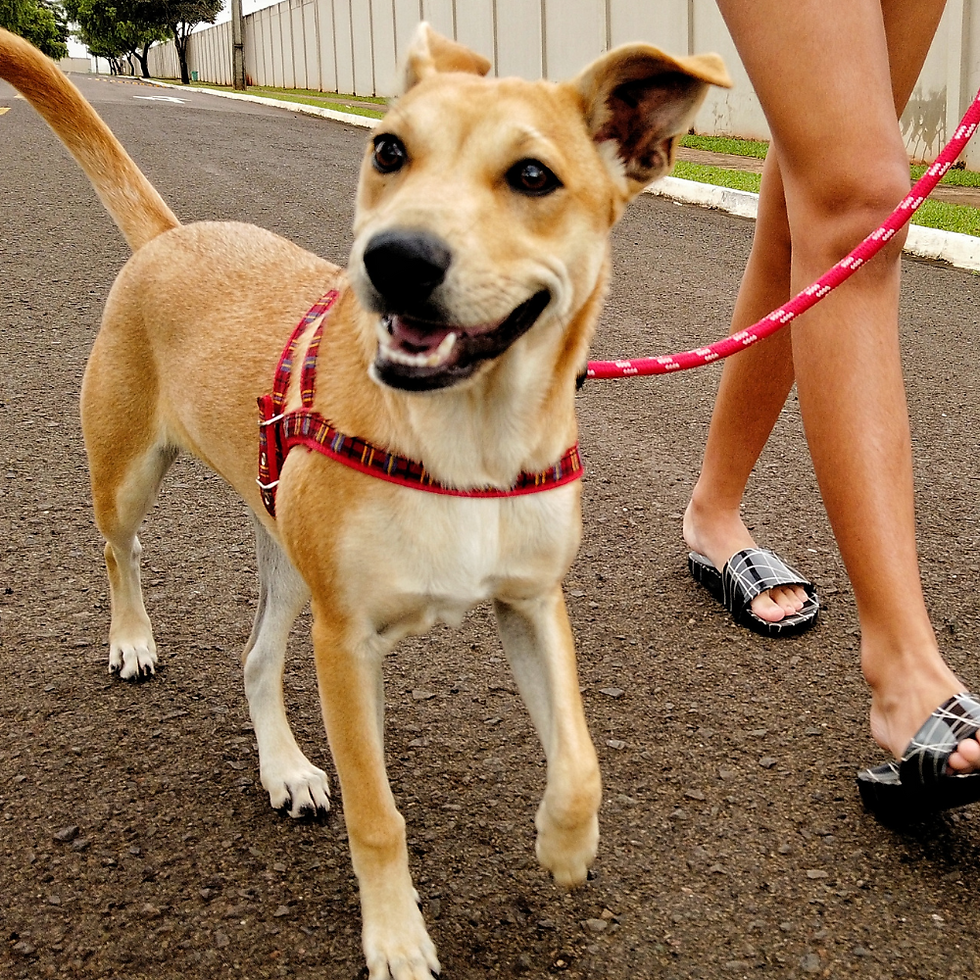How long does it take to train a dog?
- Adolescent Dogs

- Jul 16, 2022
- 7 min read
How long does it take to train a dog: Setting realistic goals and ‘fixing’ problems

Our dogs are a huge part of our lives, so when they display behaviours which cause us problems or complicate our lives, naturally we want to ‘fix’ them as quickly as possible, ideally with as little effort as possible too.
Residential dog training is often branded as a ‘quick fix’, there’s an assumption that that’s what people pay for and that’s the service being sold. Although residential training can help to get on top of challenging training struggles and get your dog's training moving in a positive direction, owners will still need to be prepared to put in the time and work after too.
Even outside of residential training, all dog trainers work with people who are struggling with their dog’s behaviour and looking for solutions. Most people are somewhat realistic and are genuinely interested in working with their dogs to overcome any issues. However, even the most well-intentioned owner is likely to be thinking ‘how long will this take to fix’.

All dog trainers will be able to relate to that. Most of us will have been through challenges with our own dogs and had to come to some acceptance that there is no quick fix and we may have to make compromises for the sake of our dogs.
We’ve all had to give up that dream of the ‘perfect dog’, and learn to enjoy our dogs for who they are.
The world we live in feeds the quick fix mentality. We want things fast, we want problems fixed instantly and any inconvenience in our lives should be sorted immediately.
Unfortunately, in dog training, there are no quick fixes. Residential training or not, it’s always the same. Your dogs training progress will depend on many factors, including your level of effort, your consistency, and your willingness to adapt to your dog and make compromises to benefit your dog. Not only that, it will depend on your individual dog too and what progress they are capable of.
In order to see progress in your dog’s behaviour, you have to set realistic goals and be willing to accept that realistic may not be the same as your ultimate dream.
Anyone who is selling a ‘quick fix’ solution is most likely selling you lies! Or if not lies, then some seriously harsh training methods which you would probably rather not expose your dog to.

As a dog trainer you meet many people who will say something like ‘I just want my dog to come when I call’, ‘I just want him to like other dogs’ or ‘I just want to be able to have visitors round without him barking’.
The problem with this is that it makes it too simple, ‘I JUST want my dog to do this…’ doesn’t take into account all the aspects involved. A problem behaviour is rarely a standalone thing.
A dog who barks at other dogs will need a huge amount of foundation training and management before you even start working on the actual barking behaviour. Likewise, a dog who pulls on the lead may need a lot of work in other areas before addressing the lead walking.
You have to consider your dogs’ genetic traits too, all dogs will have traits which have been bred into them to make them good at the role they were bred for. Spaniels are expert hunters, Collies are skilled at herding, Terriers are bred to chase. You can channel these traits into more appropriate outlets, but if a dog has been practicing unwanted behaviours linked to the skills they were bred for, it can take a long time to teach alternative responses.

Some behaviours may develop regardless of how much training you put in place. You may still have a German Shepherd who doesn't welcome guests, a Spaniel who steals the kids toys and guards them aggressively, a Border Collie who chases traffic and joggers, or a Schnauzer who barks at anything new in their environment.
These genetically driven behaviours can't be put on any 'quick fix' list as they are innately reinforcing for your dog.
Asking your dog to stop genetically driven behaviour is about as simple as asking to make his legs longer or his nose shorter. So before you say you JUST want your Cocker Spaniel to stop moving so much, to stop hunting all the time and to settle like a Maltese, realise that you're actually asking to change your dog's entire breed! Whilst some of these skills can be built, you're fighting an uphill battle. So rather than fighting against what you're dog is going to find genetically reinforcing, we need to set more realistic goals and give them a job to do that fulfils their natural desires.
Dogs are complex animals, we can’t simply look at one behaviour we don’t like and assume we can fix that on its own. Usually there will be many factors contributing to one behaviour problem, and all of these need to be addressed.
What Do Realistic Goals Look Like?
This will depend on your dog and your own expectations, but for example, a dog-reactive-dog who barks and lunges at every dog on the lead, you may say you ‘just want a dog who doesn’t bark at dogs’, but if you unpick the behaviour you suddenly find a wide range of areas to work on:
The dog may be in a state of high-arousal before going out for a walk so you need to work on reinforcing calmer behaviour before leaving the house
The dog pulls on the lead which also increases stress levels so you need to work on calm lead walking away from the trigger of other dogs
The dog can’t take food rewards during walks so food motivation needs to be built before training around dogs can begin
The dog isn’t able to respond to any cues when outside the house, so a reliable response needs to be reinforced before training around dogs
For some dogs there will be even more factors to consider but in a typical example, you’re looking at a minimum of four areas which will need considerable work before your dog is even ready to start any form of training in the presence of other dogs.

With this in mind, a more realistic goal may be to be able to pass dogs on the other side of the road without barking and lunging, with the continued aid of positive reinforcement. Within that goal, you have to accept it could take months to reach that point and it will require on-going management. You may always have to change direction when you see certain dogs, you may always need to reward your dog when passing other dogs, and it could take years, if ever, to be able to pass a dog in close proximity on-lead.
If you have a dog who can’t be trusted off-lead because he likes to hunt wildlife, your realistic goal isn’t to be able to trust him off-lead everywhere, it’s more likely to be that he can enjoy more freedom and be trusted in a wider range of environments. Again, it’s not a simple problem to fix, there are many parts to it which will each require training and management for many months or years.
You need to build good food motivation or find a way of reinforcing your dog for coming back, something which outweighs the reinforcement they gain from hunting
You need to teach your dog to engage with you and to find reinforcement in staying closer to you
You need to manage your dog’s behaviour to prevent them practicing the unwanted behaviour, for example, use a longline or choose different walking locations
You need to work consistently on this, starting in places where your dog is able to listen and respond, before building up the level of distraction and difficulty
You need to give your dog an outlet for his desire to hunt. Scentwork & Tracking games can be a great way to provide your dog with an outlet
This could also apply to a dog who struggles to recall around dogs, people or any other distractions. It may appear a very simple, easy behaviour to teach your dog to come back when called, but when you consider all the parts involved, it’s suddenly far more complex and it becomes clearer as to why there isn’t a quick fix.
You could ‘fix’ the issue by never letting your dog off-lead, but that still doesn’t address the underlying problems, it simply masks the issue. For some people, that will be the solution, but there will always be a question over whether it’s the best for the dog in the long term.
For other problems, management can provide a quick fix and will resolve the issue without any further training needed. As long as the dog doesn’t suffer from this, then there’s no shame in using management to avoid the problem because for some issues, this will provide the most stress-free, happy option for both dog and owner.

For example, a dog who is fearful of visitors and finds the whole experience very stressful, may be happiest and most relaxed in their crate in a separate room while visitors are in the house. This can provide a safe, easy solution and resolve the problem.
Other people may prefer to work through the issue to try and build their dogs confidence with visitors, but it’s not an easy issue to work through, and in some cases you could argue that a simple management solution is actually the preferable option.
Each dog is different and their progress will be individual. Likewise, each owner will have their own expectations and priorities for their dog, some people will want to dedicate a lot of time to training, while others will be satisfied with using good management to ensure their dog remains relaxed.
There is no right or wrong way to deal with behaviour problems, as long as your dogs’ wellbeing is at the centre (and you avoid anything that causes pain, fear or unnecessary stress!) then by all means choose management strategies or choose to work through training and behaviour modification plans.
‘Fixing’ behaviour problems is really about learning to accept your dog for who they are, their individual traits and needs, their limitations and their challenges, while also working on what you can to make your life together as stress free and enjoyable as possible. You can’t just replace parts of your dog until you create the perfect model, there will always be limitations and setbacks, because after all they are living beings and we all have our flaws!
So definitely ask a professional for help but don’t expect a 'fixed' dog, especially not in a matter of hours, days or weeks.
Here at Adolescent Dogs, we can help you to set realistic training goals for your individual dog and even help to fast-track your training with our residential training stays. Alternatively, join our Online Academy to access our full library of video tutorials and our personal coaching and support.
Written by Naomi White









Comments